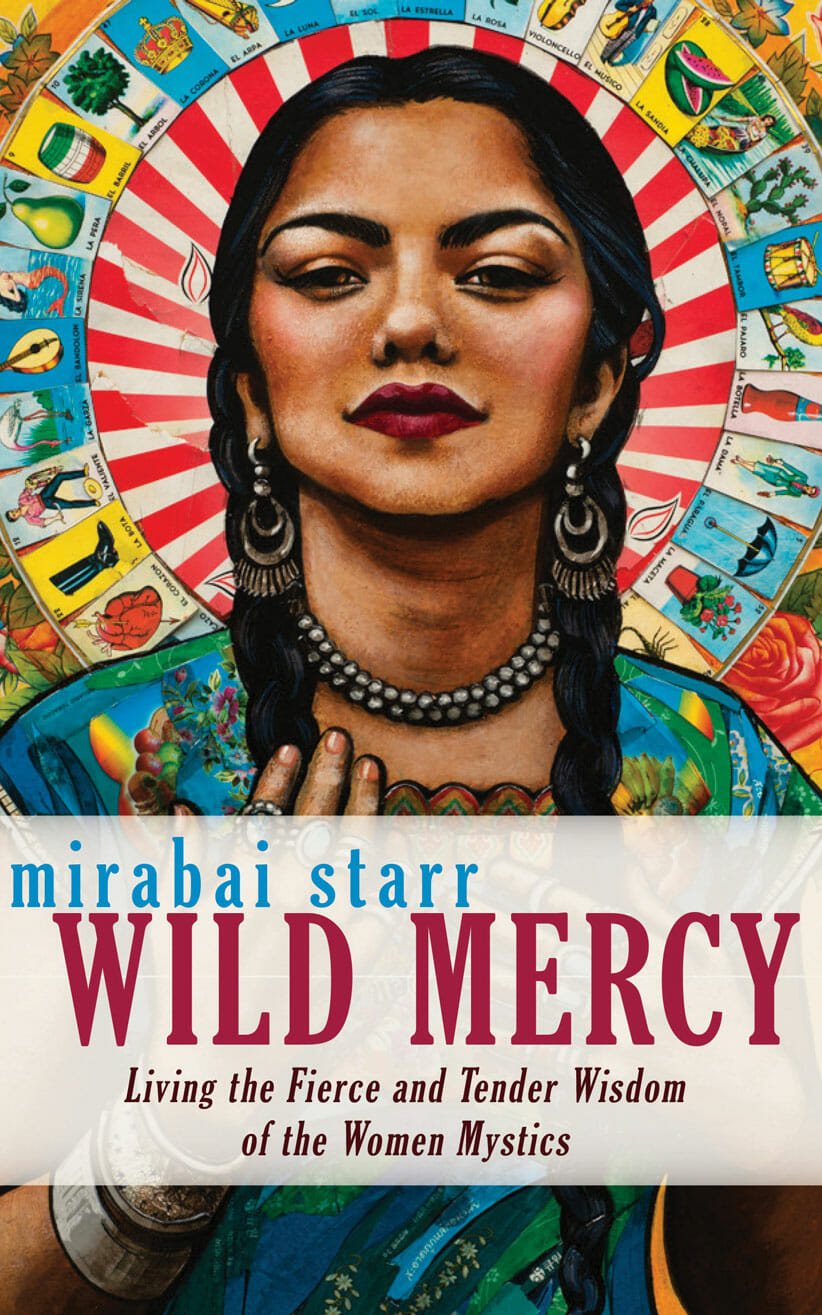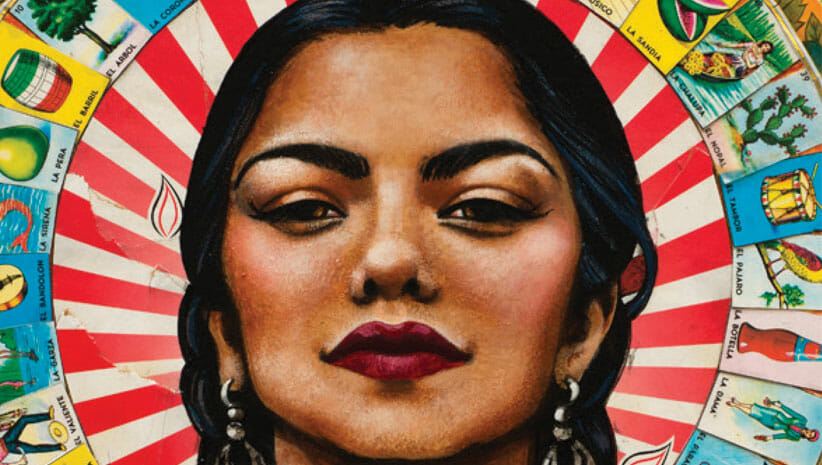Wild Mercy: Living The Fierce and Tender Wisdom of the Wisdom Mystics
Every so often, we come across a work so perfectly timely that it seems truly divinely inspired, and the recent release of Mirabai Starr’s book Wild Mercy: Living The Fierce and Tender Wisdom of the Women Mystics is a perfect case in point. As we look out at a world that is often characterized by #MeToo, open racism, and extreme divisiveness, we find a healing balm in Mirabai’s exquisitely articulate and insightful invitation to all of us to explore – and ultimately to embody – the fierce compassion and timeless wisdom of women mystics throughout history.
Wild Mercy is, in a word, extraordinary. It draws upon the power of story, spiritual practice, and myriad mystical and philosophical traditions. The words are crafted by an author with a rare gift for weaving these traditions together masterfully and making them effortlessly accessible to 21st century seekers.
The Stories of the Mystics
As readers, we’re guided expertly on a journey that introduces us to inspiring mystics including the author’s namesake Mirabai, the Indian saint Anandamayi Ma, Saint Teresa of Ávila, the Sufi ecstatic Rabia of Basra, the Christian yogi Hildegard of Bingen, and the 18th-century Japanese poet (and Basho protégé) Chiyo-ni.
Delving just as deeply into our own time, we also meet remarkable contemporary mystics, healers, and activists. We are introduced to Zen traumatic bereavement specialist and feminine mystic exemplar Dr. Joanne Cacciatore (“Dr. Jo”). We hear from Christena Cleveland, an African-American social scientist, educator, and theologian who explores the realms of privilege and marginalization from a spiritual perspective. In the pages, we meet Syrian-American Muslim rapper, peacemaker and poet Mona Haydar, as well as forgiveness facilitator Ondrea Levine.
Men are Welcome Here
A quick note to any men who might feel that this book is not addressed to them: Mirabai offers a clear, concise invitation to fully engage with and respect the realm of this deep feminine wisdom. She says, “Men are welcome here. You just don’t get to boss us around or grab our breasts or solve our problems.”
The Unifying Thread of Feminine Wisdom
It has often been said that mystics from any tradition usually share more in common with one another than they do with more orthodox practitioners of their source tradition. Nowhere have I found this to be more true than in the all-too-rarely-elucidated realm of the women mystics. The unifying thrust of the sacred feminine inquiry extends far beyond the tenets of any one religion or cosmology.
Inclusivity and the Divine
Wild Mercy shows us pathways and perspectives that reconcile radically different ideological and spiritual divides. This can include the nurturing inclusivity of the Mother holding the wounded child who has hurt others, weaving together the paths of the “householder” with that of the ascetic, and a radical simultaneous holding of dualistic and non-dualistic spiritual worldviews. For example, how many of us have heard the dualistic Bhakti adage, “I don’t want to BE the sugar, I want to TASTE the sugar?” Here we find an invitation large enough to allow us to embrace both sides of this apparent paradox.
Spiritual Solutions for the Modern Age
Throughout Wild Mercy, Mirabai makes a clear case that the solutions to some of the most seemingly intractable issues of our time lie in embracing and embodying the skillful response of the feminine mystic. These issues include the vitriolic polarization so ascendant in this era, or the blatant, tragic disrespect and contempt that fuel racism, sexism, xenophobia, or even the environmental crises that threaten to eradicate life itself. As the author writes, “Rather than delineate perpetrators and victims, sacred and profane, physical and metaphysical, the feminine welcomes everyone to the table. Like the Great Mother herself, the feminine mystic does not view creation as a damaged object in need of repair but rather as a beloved child in need of care.”
Walking the Path of the Feminine Mystic
Mirabai continues, “To walk as a feminine mystic in this world is to recognize that our lives are interpenetrated with the lives of all sentient beings and that the One we love shines from every nexus in that web of interbeing. Whenever we tend to a single strand, we are participating in the care of the whole. When we turn our face from the suffering of any being and walk away, we are exiling ourselves from our Beloved.”
The path of the woman mystic is one on which we fully engage with all aspects of life. Following this path means that we find a way to simultaneously hold the worlds of devotion and non-duality, avoiding the “trap that sets up devotion and non-dualism as mutually exclusive.” We are invited into a peaceful coexistence of the devotional and non-dual paths arising from “moments of rapture in the face of the most ordinary phenomena, in which our particular embodied experience gives way to an undifferentiated melding with All That Is.”
Mirabai says that the path of the woman mystic “…is about becoming as fully present as possible to the realities of the human experience… Instead of engaging spiritual practice as a contraption to catapult us up and out of this relative world, the feminine mystic shows up right here, in the center of the incarnational experience. We bless the messy wonder of it all, the experience of being human… It is by showing up for the full encounter with reality that we discover our hidden wholeness, which was, of course, present all along.”

Lessons from the Vast Spiritual Terrain
It is nearly impossible to convey the vastness of the spiritual terrain Mirabai so expertly elucidates in this work. And it is coupled with one of the most authentic, vulnerable and eloquent voices I’ve had the pleasure to read. In only 264 pages, we are brought fully into the realm of the sacred feminine in so many forms: Quan Yin, Tara, Sophia, Shekinah, Mary, Fatima, Kali, Durga, Saraswati, Sita, Shakti, Gaia, Spider Grandmother (cocreator and sustainer of the world), Pachamama, and Demeter (the Greek goddess of the harvest and fertility).
Perhaps Demeter is one of the most significant characters in this work, as her story is so archetypally connected to the tragic death of the author’s fourteen-year-old daughter Jenny. Demeter was able to negotiate having her beloved daughter Persephone returned from the underworld for half of the year, but in spite of all of Mirabai Starr’s excruciating grief and “rowing my boat across the waters of death, calling her name,” Mirabai received no such dispensation.
Yet even here we find a hidden gift and revelation. “Sometimes it appears as if it is when we are most radically shattered that the boundless grace of divine Love comes pouring in…We are conditioned to see death and painful longing as problems to be solved rather than as sacred landscapes to be revered.”

Footsteps for the Grief-Stricken
Following the courageous path that she expertly elucidates throughout the book, Mirabai Starr opted to transform the excruciating lifelong pain of losing her daughter Jenny into the creative endeavor of writing this book.
She provides footsteps for the grief-stricken to follow. “The only thing that helped me make sense of what happened to me was to show up for others as they showed up for the immensity of what had happened to them…This alchemy could not have occurred had I not taken the journey of descent.”
As Mirabai makes abundantly clear, this loss that will live forever in her heart also alchemically became the impetus for creating Wild Mercy. And, inevitably, all of us face grief, loss, and the reality that everything in the material domain changes and ends. Rather than attempting to distract and disengage ourselves, the author reminds us that, “The path of the feminine mystic invites us into direct connection with the heart of our pain, where we may harness the power of our loss to create intimacy with the sacred.”
Wild Mercy as a Guiding Light
Wild Mercy is simply one of the most important and relevant spiritual books of our time. I invite you to follow the lead of Mirabai Starr and countless women sages throughout history, and to use this masterful exploration of the sacred Feminine as a guiding light for your unique voyage of spiritual transformation and healing service to this world. Isn’t it the other way around? Rather than tasting the sugar we can be the sugar?
An award-winning musician, composer, vocalist and multi-instrumentalist equally accomplished on tabla, percussion, esraj, guitar, and keyboards, Benjy Wertheimer has performed and recorded with such artists as Krishna Das, Deva Premal and Miten, Jai Uttal, Walter Becker of Steely Dan, virtuoso guitarist Michael Mandrell, tabla master Zakir Hussain, and renowned bamboo flute master G. S. Sachdev.
He has also opened for such well-known artists as Carlos Santana, Paul Winter, and Narada Michael Walden. Benjy is a founding member of the internationally acclaimed world fusion ensemble Ancient Future.
He began his musical studies at age five, starting with piano and later violin, flamenco guitar, and Afro-Cuban percussion. Benjy has been a student of Indian classical music for over 35 years, sitting with some of the greatest masters of that tradition, including Alla Rakha, Zakir Hussain, Ali Akbar Khan and Z. M. Dagar. Along with the Grateful Dead’s Mickey Hart, he was a contributing composer and member of the Zakir Hussain Rhythm Experience.
Trained in audio engineering at San Francisco State University, Benjy is also very much in demand as a producer, engineer and studio session musician. For over five years, Benjy scored music for the internationally syndicated NBC series Santa Barbara, and his CD Circle of Fire went to #1 on the international New Age radio charts.
Making his home in Portland, Oregon, he now tours internationally in the kirtan group Shantala (with his wife Heather) and as part of the kirtan “supergroup” The Hanumen.

